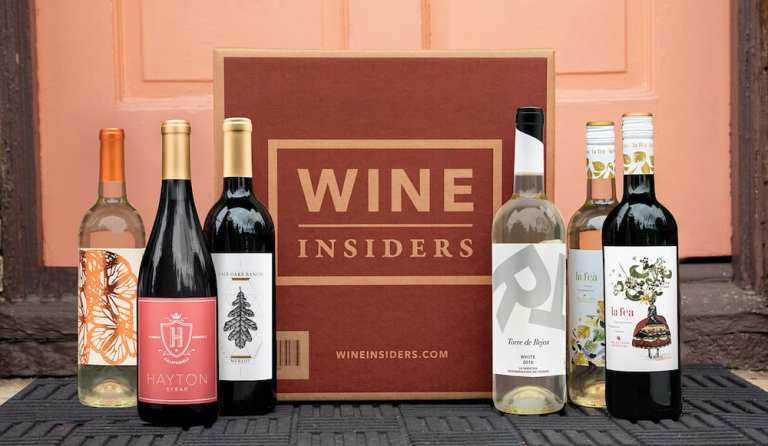
There are a lot of things consumers haven’t been able to do during the pandemic – like go to concerts, sit in a movie theater or, for the most part, go to sporting events. But one thing they have been able to do is drink – and the data shows that they have been doing exactly that. In fact, quite a lot.
Not that the behavior isn’t explainable. Living in lockdown pushed consumers to drink more at home, not only because it was the only option, but because that trend had already been in motion for alcoholic beverages. The other trend that was already in motion was buying alcohol – wine in particular – online.
The pandemic has brought a surge in eCommerce wine orders, which has been both advantageous and challenging for wine suppliers and retailers. For example, for the period from March through May, Wine Insiders’ orders increased 250-300 percent when compared with the usual volume for that time of year, driving about the same volume as Black Friday, Christmas and New Year’s Eve every single day. Sixty-nine percent of those orders were from repeat customers, while new customers increased by 800 percent during that period. Through June, July and August, Wine Insiders orders have been about 60 percent higher compared to 2019.
This is not normal for the beverage alcohol business. Zac Brandenberg, CEO of Wine Insider’s parent company DRINKS, told PYMNTS that the business usually runs on a fairly seasonal cadence. Business is best when people are gathering and celebrating, which usually sets the fourth quarter as the benchmark. Quarters one and two are usually slower, as consumers get ready for traveling and summer vacations. But this year, business at DRINKS – which also operates B2C wine programs for Kroger, QVC and other accounts – hit so hard in Q2 that the company had to cap its shipments to have any kind of shot at meeting demand.
“By the third week in March, we really started to see a tipping point in indicators that consumer shopping behavior was going to be similar to what we would traditionally see in a Q4 period,” Brandenberg said. “There are always adjustments that we need to look at in our business that may not be apples-to-apples to traditional retail, but we expect to see solid growth year over year. And we spend a lot of time securing our supply chain and developing our forecasting models. But to see a peak in April is highly unusual.”
And that highly unusual pattern continued through August, as DRINKS overall (B2B and B2C) saw a 110 spike in new customers, and a 240 percent increase in repeat orders from new customers compared to 2019. This has left Brandenberg with a case study in management, as he gears up for what he expects will be continued high levels of the digital-first economy for wine.
While the spike has been great for business, it didn’t come without difficulty. For example, just as the increased demand hit, the company saw some supply chain issues from European vineyards. After that, packaging issues emerged with items like corks, tops and bottles. As things restabilized, Brandenberg and his team were able to start preparing for the balance of Q3 and create models for Q4.
All of this activity validated what Brandenberg has known for years, which is that wine is a viable eCommerce business despite its relatively low market share compared to brick-and-mortar stores.
“There is a renewed, or revised, recognition by many companies about the need for a clear and direct digital strategy,” he noted. “Retailers know they need an aggressive digital operation, and if they haven’t already, they need to start evolving or speed up the revolution to meet customer demand where it is. And that process has been significantly accelerated by COVID. If we were having this conversation back in December 2019, would be saying the same things about how retailers need to engage their customers more comprehensively in an omnichannel fashion.”
Brandenberg pointed out that online beverage alcohol sales already represented a massive opportunity before the pandemic, and even more so now. He is now preparing for Q4 by creating inventory and operations models, but admits it has been a difficult exercise at best. Part of that model involves fulfillment and shipping, which many sources have cited as a possible limiting factor for Q4. He allows that it could be, but believes his company and its delivery partners are up to the challenge. He sees DRINKS more as a marketing technology company than a beverage logistics company, and that makes a huge difference in his approach to Q4.
“This enables us to provide service to the industry and empower these platforms,” noted Brandenberg. “We do that with our underlying technology, which includes components such as our API that provides the connectivity for our partners, all the way through the data profiling and the algorithms we use to optimize what consumers see on our own D2C sites. So, even though there are the fundamentals of moving physical goods from where they’re produced, we have a lot more technology than that. Ignoring that technology component would be similar to thinking about Amazon as a big warehouse operator.”
As for the pace of this fourth quarter, Brandenberg thinks eCommerce is the key to winning in a season packed with selling holidays both traditional and manufactured. In the meantime, he will continue to be an evangelist for the cause of the digital-first beverage alcohol economy.
“The online penetration is still much lower than it should be,” he said. “Some of it has to do with state regulations and other factors, but it’s easier to buy a Tesla online than it is to buy a bottle of wine, and that’s just crazy.”